
Moldova’s Chisinau (previously known as Kishinev) intrigued me, surprised me and overwhelmed me over a four day period in and out of the city, across the border into Tiraspol, Transnistria and a countryside jaunt to Orheiul Vechi and Butuceni.
If you want to travel to Moldova, I’d definitely recommend spending some time in the capital city – I spent three nights there which is ample unless you’re a serious history buff. Chisinau is where you’ll get an insight into the history and culture of the nation. It’s also the biggest city so the easiest place to meet locals and for the socialites out there, it has the best bars in Moldova.

Random art in Chisinau, Moldova.
The city is pronounced Kay She Naow and I arrived after a night train from Bucharest in Romania ready to explore under grey and wet mysterious skies.

Here are my personal 12 easy and cool sights to see in Chisinau’s city centre.

Street statues in Chisinau, Moldova.
Eternal Flame Memorial: The Eternal Flame Memorial is dedicated to the unknown soldiers from Chisinau, Moldova who died in the Second World War. It is housed in a nice park which is worth a walk as you will also see soldiers manning the place and may catch them marching.
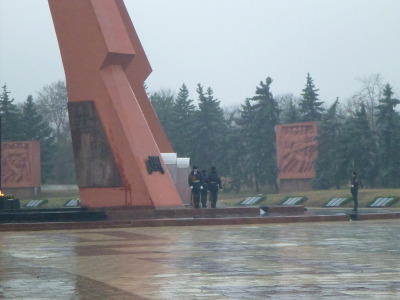
Soldiers at the Eternal Flame Memorial.
Piata Centrala (Central Market) — Eastern European cities are not renowned for their central markets compared to the Middle East and Asia, but Chisinau is different. Just off the main street Stefan cel Mare Boulevard you’ll find the truly eclectic and chaotic central market, known as Piata Centrala.
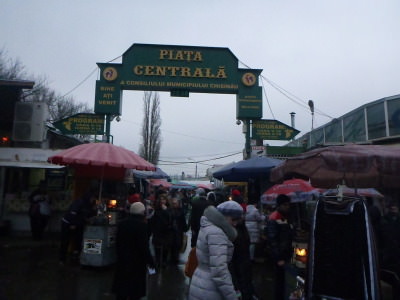
Chisinau’s Piata Centrala – central market.
It is a bustling market that touts a ton of indoor meat, fish and fruit sections and clothes stalls.
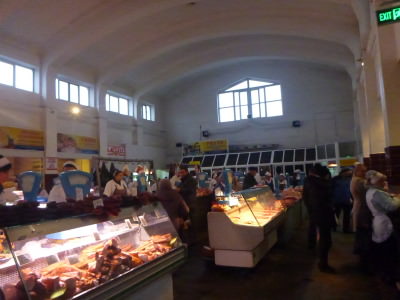
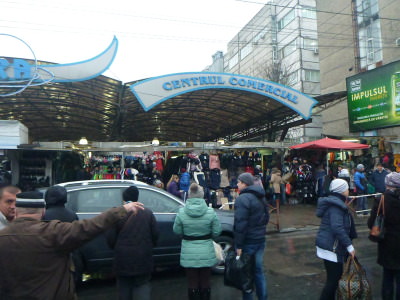

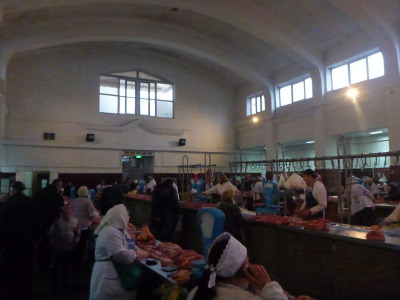
Monument to Victims of Stalinist Deportations — outside the main train station in Chisinau is this monument dedicated to those who sadly died under the rule of Stalin in the old USSR.
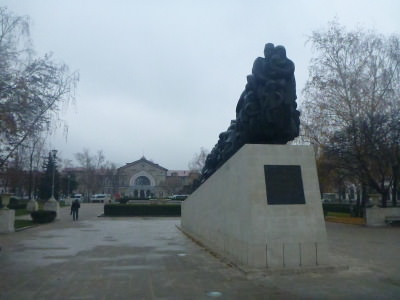
Monument to victims of Stalinist deportations.
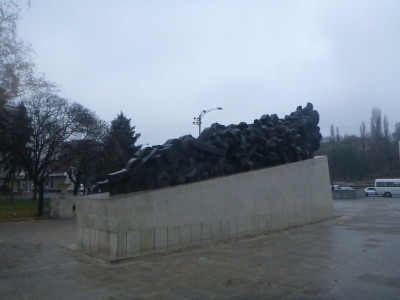
Monument to victims of Stalinist deportations.
GI Kotovski Monument — where Yuri Gagarin Boulevard meets Negruzzi Street, you’ll find a shopping Mall called Atrium and a Casino. In front of it sits the Grigory Ivanovich Kotovski monument. GI Kotovski was an adventurist, Soviet military and political figure and a participant in the Russian Civil War. He was also a Russian gangster and bank robber and later a member of the Central Executive Committee of the Soviet Union. Below, Kotovski sits on a horse.
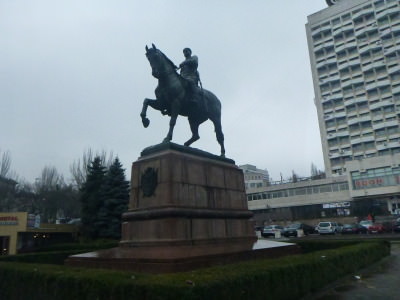
GI Kotovski statue.
Liberation Monument — outside the swanky looking Chisinau Hotel, on a prominent corner you’ll notice the Liberation Monument. This memorial commemorates the Soviet liberation of Moldova in August 1944.
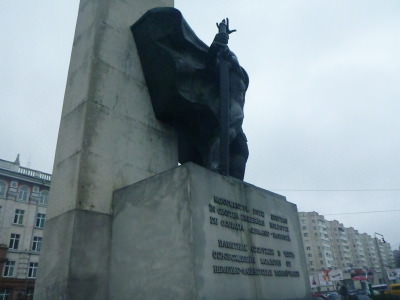
The Liberation Monument.
Town Hall — Moldova’s main street Stefan cel Mare Boulevard is drenched with stunning architecture. The Soviet times brought some significant buildings, which these days are largely used for local government. The Town Hall jumps out at you, but all along the boulevard you’ll also be admiring the historical buildings.
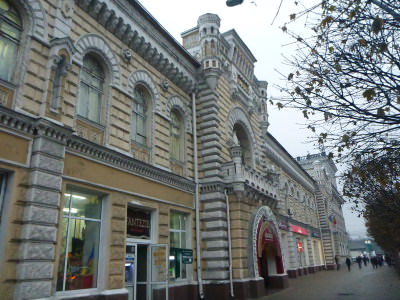
Town Hall in Chisinau, Moldova.
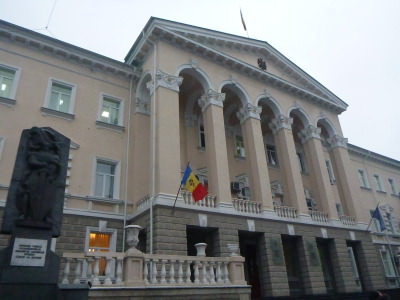
Stunning architecture on Chisinau’s main boulevard.
Parliament Buildings — Moldova has been a separate republic since 1991, after the break up of the Soviet Union. The city since became known as Chisinau.
Stefan cel Mare si Sfant — you’ll notice Stefan cel Mare’s name brandished around in this corner of the world, so sooner or later you’ll ask someone who the hell he is. He has a statue in the public gardens and the main street in the city is named after him.
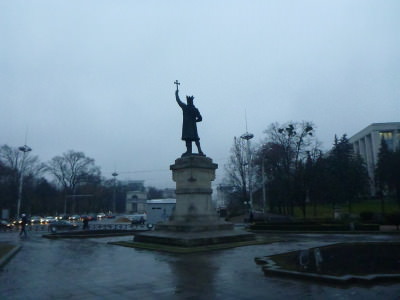
Stefan cel Mare statue in Chisinau, Moldova.
Stefan cel Mare is also known as Stephen III (of Moldavia) and Stephen the Great and Holy. He was the Prince of the Principality of Moldova between 1457 and 1504, and the most prominent representative of the House of Mușat. During his reign, he strengthened Moldova and maintained its independence against the ambitions of Hungary, Poland, and the Ottoman Empire, which all sought to subdue the land.
Stephen achieved fame in Europe for his long resistance against the Ottomans. He was victorious in 46 of his 48 battles, and was one of the first to gain a decisive victory over the Ottomans at the Battle of Vaslui, so it is no wonder that Moldova are proud of his achievements. Without Stefan cel Mare’s victories back in the day, it’s likely the current country of Moldova wouldn’t exist.

Stefan cel Mare Boulevard.
Triumphal Arch — Pyongy has one, Paris has one, Vientiane has one and bang – Chisinau can say the same with it’s Triumphal Arch, which is fairly close to the Parliament Building and opposite the Cathedral of Christ’s Nativity.
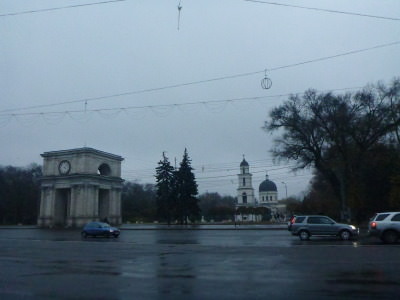
The triumphal arch in Chisinau.
Cathedral of Christ’s Nativity — I loved the fact that this extremely beautiful church is in a really leafy park bang in the city centre, yet there wasn’t a tourist in sight.
Selfie at Cathedral of Christ’s Nativity.
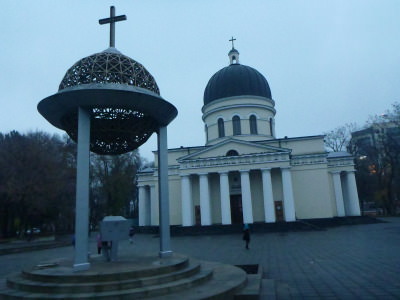
Chisinau’s Cathedral of Christ’s Nativity.
Dinamo Stadium — this is not the national football stadium in Chisinau, Moldova – that belongs to FC Zimbru on the edge of town (I saw it only from the bus) and it is also NOT the stadium that used to be the national stadium – that one is the Republic Stadium which has been allowed to overgrow and is now a sight for sore eyes sadly. Still, I headed to check out the Dinamo Stadium as I have to visit at least one football stadium per country – it’s a given.
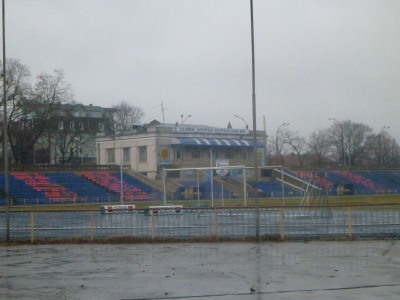
A wet day at Dinamo Stadion.
Moldovan Orthodox Church — while the Nativity Church is the most visited and the most popular, I loved the colour and decor of the Moldovan Orthodox Church even more – it is situated near the Eternal Flame monument and park and on the corner to the left past the Liberation Monument.
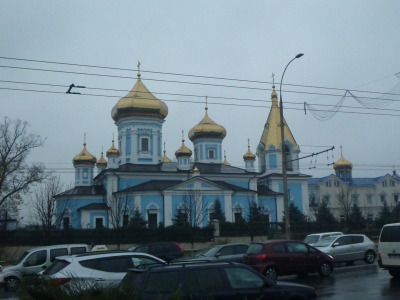
Moldovan Orthodox Church in Chisinau.
Aside from these 12 things, it’s just a cool city to hang out in – two of the shopping centres are worth a trip too – MALLdova for its punnery and Atrium which offers a view of the city if you ask the security to get a lift to the 9th or 10th floor.
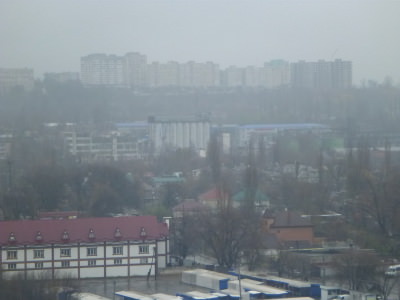
During my 4 days in Chisinau and Butuceni, it rained non-stop for 24 hours, heavily! Above, the view over Chisinau from Atrium Shopping Mall.

Jonny Blair is a self confessed traveling nomad who founded and blogs at Don’t Stop Living. He sees every day as an adventure. Since leaving behind his home town of Bangor in Northern Ireland ten years ago he has traveled to all seven continents, working his way through various jobs and funding it all with hard work and an appetite for travel. Don’t Stop Living, a lifestyle of travel’ contains over 1,000 stories and tips from his journeys round the globe. He wants to show others how easy it is to travel the world, give them some ideas and encourage them to do the same but most of all he aims to constantly live a lifestyle of travel. He is currently based in Hong Kong and on Twitter @jonnyblair.








